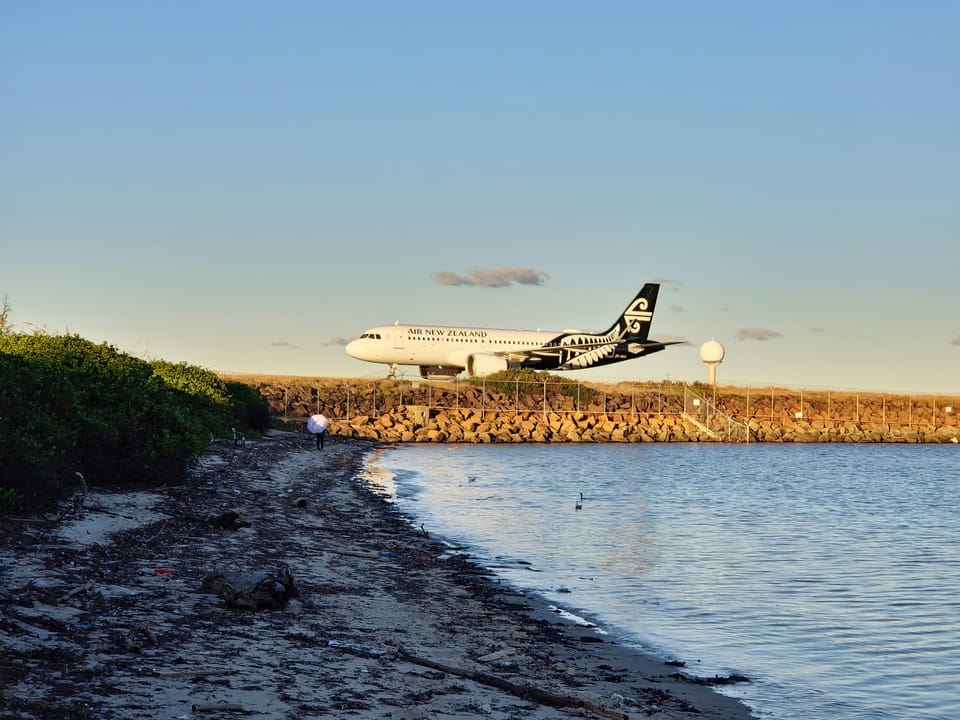Air New Zealand drops 2030 SBTi target due to supply chain issues

Air New Zealand has dropped its 2030 GHG emissions intensity reduction target and withdrawn from the Science-Based Targets Initiative, citing aircraft availability and sustainable aviation fuel supply restrictions.
The company says it is still committed to achieving net zero emissions by 2050, and is now considering a new near-term carbon emissions reduction target “that could better reflect the challenges relating to aircraft and alternative jet fuel availability within the industry”.
“In recent months, and more so in the last few weeks, it has also become apparent that potential delays to our fleet renewal plan pose an additional risk to the target’s achievability. It is possible the airline may need to retain its existing fleet for longer than planned due to global manufacturing and supply chain issues that could potentially slow the introduction of newer, more fuel-efficient aircraft into the fleet. As such and given so many levers needed to meet the target are outside our control, the decision has been made to retract the 2030 target and withdraw from the SBTi network immediately,” said Air New Zealand CEO Greg Foran.
The dropped 2030 target, which was validated by the SBTi in 2022, included a 28.9% reduction in jet fuel GHG intensity, measured as tonnes of CO2e per revenue tonne kilometre. This would have been equivalent to a 16.3% reduction in absolute emissions, from a 2019 baseline.
The airline made the announcement today (July 30) on the New Zealand Stock Exchange board.
SAF production and aircraft supply shortages
Aviation accounts for about 2% of global greenhouse gas (GHG) emissions and 800 million tonnes of CO2 per year. New and more efficient aircraft are helping the sector to reduce its footprint, but the post-pandemic aviation boom, combined with shortages of parts and skilled labour, have led to delivery delays.
In addition, large-scale decarbonisation will depend primarily on the development of sustainable aviation fuel (SAF), which still makes up less than 1% of all aviation fuel use – despite investments from aircraft manufacturers, airlines and corporate buyers to scale it up.
Last November, the International Civil Aviation Organisation’s 193 member states committed to reducing emissions from the sector by 5% by 2030, in the hopes that this demand signal will support the global SAF production ramp-up. (That said, the target was rumoured to have been lowered from an initial 5-8% reduction ambition.)
Airlines climate targets
Air New Zealand is the world’s first major airline to drop an SBTi-approved climate target. The International Airlines Group (IAG) – which owns British Airways, Iberia, Aer Lingus and Vueling – had its commitment removed from the initiative this year, meaning it failed to submit its target (a 20% reduction in absolute Scope 1, 2 and 3 emissions by 2030) in time.
(Incidentally, IAG just signed the largest SAF purchase agreement in Spain to date: 28,000 tonnes from Repsol, to be used in flights departing from Spanish airports.)
Japan Airlines, Brazil’s GOL and Wizz Air also had their commitments removed.
Most of the airlines with SBTi-validated mid-term targets have similar (or more ambitious) carbon intensity reduction goals than the one just given up by Air New Zealand. Air France-KLM is aiming for a 30% reduction, Azul is going for a 46% cut and China Airlines is committed to a 26% reduction, all by 2030.
Meanwhile, EasyJet, JetBlue and American Airlines have set 2035 as their target deadline, aiming for reductions of 35%, 50% and 45% respectively.
A research paper published this month by the International Council on Clean Transportation (ICCT) found that current manufacturer delivery projections are not consistent with the aviation sector's 2050 net zero target.
Through modelling lifetime CO2 emissions from the 2023 global fleet and new aircraft deliveries through 2042, the researchers concluded that the current fleet will emit about 9 billion tonnes of CO2 before being retired – almost half of a net-zero carbon budget.
"For airlines to achieve their climate goals, all new aircraft delivered by the mid-2030s will need to emit zero net CO2 emissions throughout their operational lifetimes," the ICCT added.







Member discussion